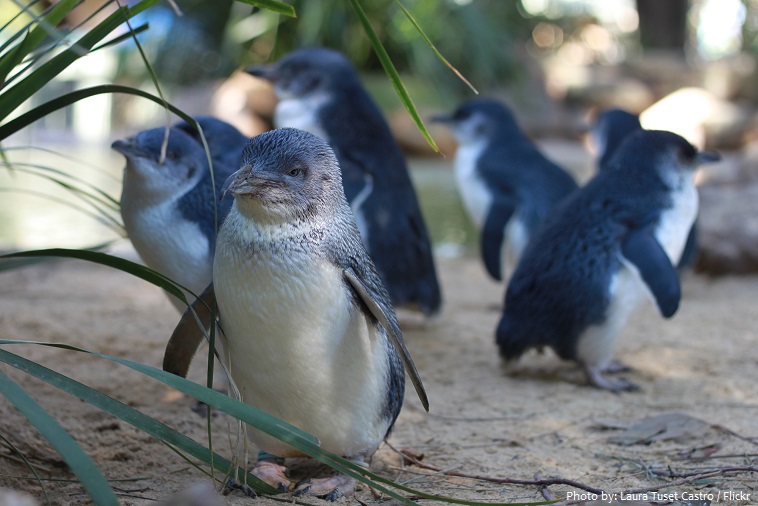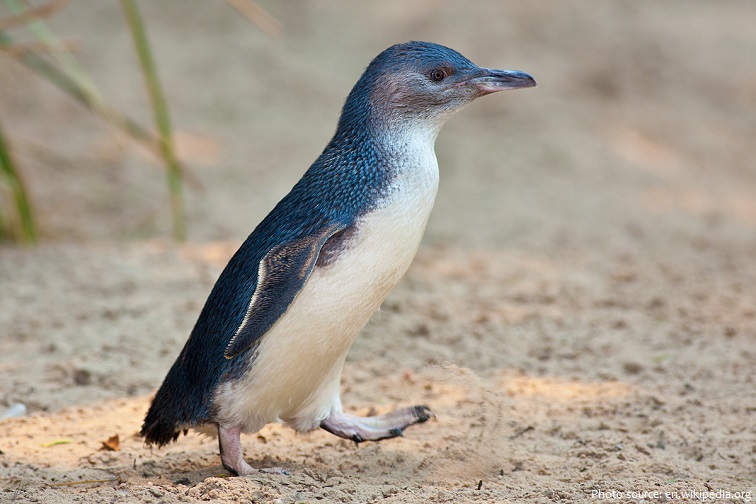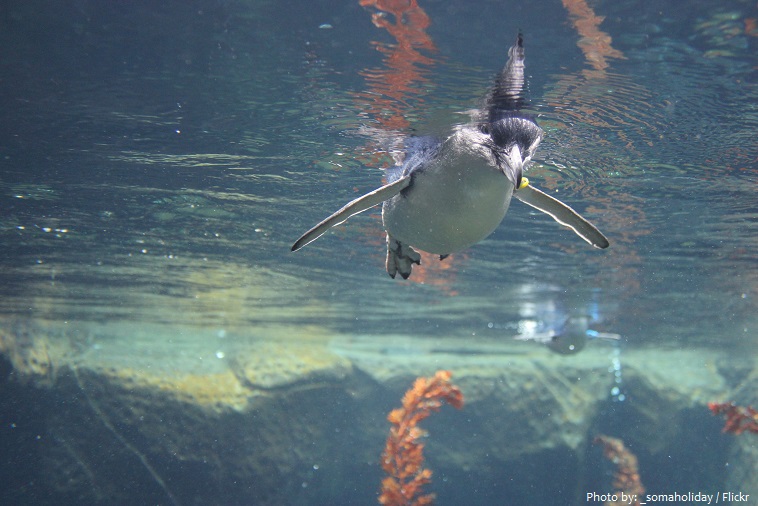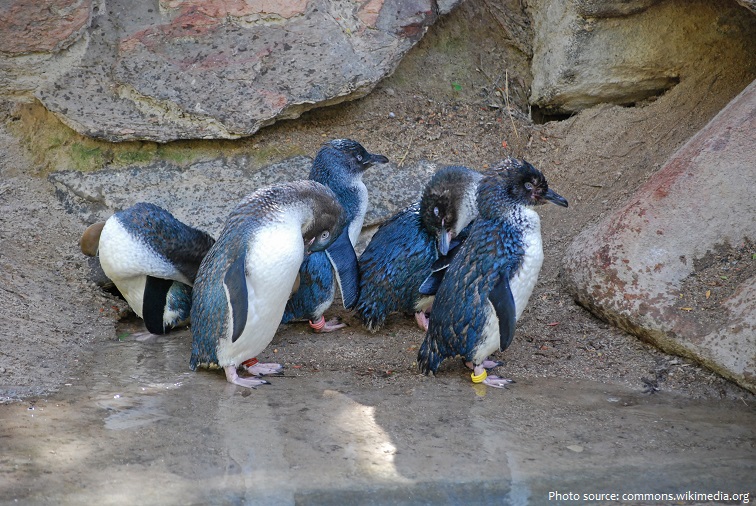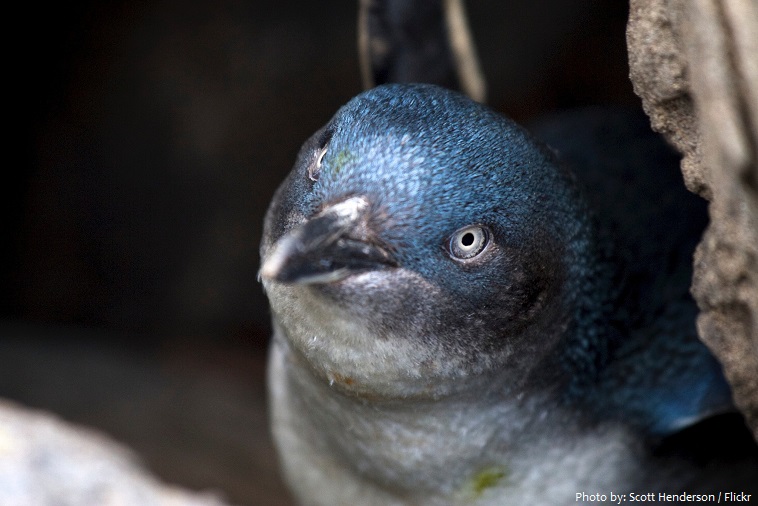The little penguin (Eudyptula minor) is the smallest species of penguin.
Little penguins are found along the southern coasts of Australia, from near Perth in Western Australia to around Coffs Harbour in northern New South Wales. They also found along the entire coastline of New Zealand.
The little penguin’s habitats include rocky coastline, savanna, scrub forest or forests.
Little penguins live an average of 6 years. However a banded little penguin has been recaptured the age of 25 years and 8 months old.
As the smallest penguin in the world, this flightless bird stands at an average height of 33 cm (13 in) and has a weight of 1.1 to 1.2 kg (2.4 to 2.65 lb).
Like those of all penguins, the little penguin’s wings have developed into flippers used for swimming.
Little penguin’s coloration: the head and upper parts are blue in color, with slate-grey ear coverts fading to white underneath, from the chin to the belly. Their flippers are blue in color.
It has a black bill with an average length of 3 to 4 cm (1.2 to 1.6 in); eyes ranging from silver to blue, grey, and hazel; the feet pink above with black soles and webbing.
Little penguins are diurnal and like many penguin species, spend the largest part of their day (about 80%) swimming and foraging at sea.
These birds feed by hunting small fish, cephalopods (octopuses, squid, and cuttlefish…) and crustaceans (crayfish, shrimp, krill…), for which they travel and dive quite extensively.
A little penguin has a speed of 6,5 km/h (4 mph).
The deepest little penguin dive recorded is 72 meters (236 feet). An average dive in search of fish is between 5 and 20 meters (16 and 65 feet).
Molting for little penguins lasts 16 days. In some regions, molting starts sometime between mid-February and mid-March, but this changes according to their location. Usually, they lose up to 40% of their body mass during molting.
Little penguins preen their feathers to keep them waterproof. They do this by rubbing a tiny drop of oil onto every feather from a special gland above the tail.
Little penguins breed in colonies along the southern coastlines of Australia and New Zealand.
Little penguins nest in burrows dug in bare sand or under vegetation. If the ground is too soft to hold a burrow, these penguins also nest in caves and rock crevices.
Courtship begins with male little penguins performing courtship displays and giving mating calls.
Little penguins only remain faithful to their partner in breeding seasons and whilst hatching eggs.
The one or two white or lightly mottled brown eggs are laid with rarer second (or even third) clutches following. Incubation takes up to 36 days. Chicks are brooded for 18–38 days and fledge after 7–8 weeks.
As new colonies continue to be discovered, rough estimates of the world population are between 350,000 and 600,000 animals.
Little penguins in the wild are sometimes preyed upon by fur seals, foxes and white-bellied sea eagles.
They are also vulnerable to attack from domestic and feral dogs and cats.
The little penguin was first described by German naturalist Johann Reinhold Forster in 1781.
In 1930 in Tasmania, it was believed that little penguins were competing with mutton-birds, which were being commercially exploited. An “open season” in which penguins would be permitted to be killed was planned in response to requests from members of the mutton-birding industry.
In Australia, they are often called fairy penguins because of their small size. In New Zealand, they are more commonly known as little blue penguins or blue penguins owing to their slate-blue plumage.
They are also known by their Māori name: kororā.
Little penguins have long been a curiosity to humans, and to children in particular. Captive animals are often exhibited in zoos.
A colony of little blue penguins exists at the New England Aquarium in Boston, Massachusetts.
